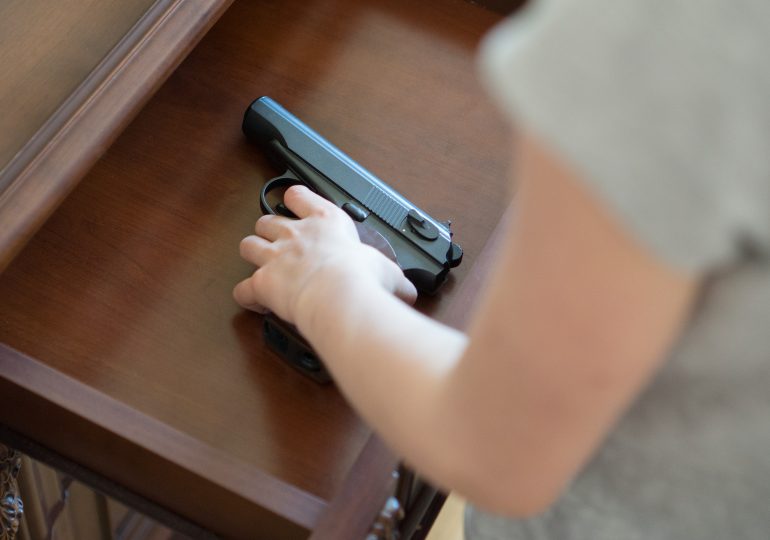Firearms have accounted for the deaths of more American children than any other cause since 2020. The true damage guns inflict on children is larger still, as demonstrated by a new study showing that emergency-room visits for children injured by firearms nearly doubled during the pandemic.
In a survey of nine U.S. hospitals, a team led by Dr. Jennifer Hoffman, a pediatric emergency medicine physician at Lurie Children’s Hospital of Chicago, found that pediatric emergency room visits due to gun shots increased from 694 in the years before the pandemic to 1,210 during the pandemic, a 74% increase, according to data from 2017 through 2022. During that time, the death rate among gun victims age 18 and under nearly doubled as well, from 3.1% to 6.1% of all children injured by firearms.
[time-brightcove not-tgx=”true”]
That increase was apparent to physicians who worked in emergency rooms throughout the pandemic, Hoffman says. But for the first time in decades, she and other researchers able to secure federal funding to study what they were seeing, thanks to a longtime freeze on grants supporting research on gun violence that was only lifted in 2020. Hoffman’s study is one of two published yesterday (Nov. 6) that help reveal the full extent of the problems gun violence poses to American kids, their families, and the health care economy.
An increase in child firearm injuries early on in the pandemic was initially thought to be the direct result of a wave of firearm purchases during lockdown, combined with heightened emotions and the dramatic changes to Americans’ daily routines, Hoffman says. “We hoped that as the daily impact of the pandemic decreased, that we would see a decline in firearm injuries,” she says. “But instead, we saw that the elevated levels of visits persisted and remain significantly elevated.”
Hoffman also found that gunshot-related pediatric emergency room visits increased only among Black and Hispanic youth, indicating what she calls “a widening of the disparities” that existed between these groups and their white peers before the pandemic.
The data, published Nov. 6 in the journal Pediatrics, doesn’t offer many other clues about the possible origins of this alarming trend. Firearm injuries are sorted into three types in hospital reporting and billing systems: Accidental injuries, often the result of improper gun storage and curious kids; self-inflicted injuries, most the results of suicide attempts; and assault injuries. This simple categorization can easily miss a lot of nuance that could be helpful for researchers, explains Hoffman. Clear early-pandemic factors, like increased gun buying, poor teen mental health, and rising community violence levels, respectively, seem to be easy explanations for rising numbers of incidents in each injury category, but it’s likely that there are many more unknown causes at play. The proportions of injury categories stayed fairly constant over time, says Hoffman, which makes it even harder to point to any one cause of increased injury.
Read More: Raising Children in America Means Living in Fear That They’ll Be Shot
This data is still important to have, since research on gun violence tends to focus on fatalities, says Dr. Zirui Song, an associate professor of health care policy and medicine at Harvard Medical School. “What is often forgotten is the much larger number of people in America each year who sustain firearm injuries but are able to survive,” he says. Song’s own work, including a study also released yesterday, takes a more expansive look at the impacts of firearm injuries in children by analyzing the consequences for those around them.
His paper in Health Affairs demonstrates what he calls the “shared family trauma” that occurs when a child is injured or killed by gunfire, which includes a more than 30% increase in psychiatric disorders among the parents of survivors.
Siblings of victims, too, are deeply affected. Although some family members rely on mental health services more often after a child is injured or killed, Song found that routine medical care often fell by the wayside for the siblings and mothers of survivors, with a decrease of between 5% to 14% for various visits and procedures. “This doesn’t necessarily mean that siblings were unharmed or sitting at home and just okay with it,” says Song, who has cared for the families of victims as an internal medicine physician at Massachusetts General Hospital. Instead, he believes it’s more likely a reflection of trauma remaining so unaddressed that it prevents families from engaging with care altogether.
Song also found that in the first year after being injured, health care spending for young survivors went up an average of $34,884, an economic burden shouldered almost entirely by insurers and employers, and one that he hopes continues to be highlighted in conversations about protecting children. (Song’s study included only families with employer-sponsored insurance, and he hopes to replicate it with families insured by public programs like Medicaid.) “So often in the healthcare system, moral arguments don’t move the needle on something,” he says. “In this case, children dying from firearm injuries have not moved the needle, but often dollars do. Gun violence is not only a medical issue and a public health issue, but it is increasingly an economic issue for our country.”
If it feels like researchers are trying to account for all sides of the issue at once, it’s because they’ve been left with little other choice, says Hoffman. They’re rushing to fill the gap left by years of growing gun ownership without the resources to track it. With papers like Hoffman’s and Song’s, researchers are still putting together an initial picture of gun violence today. “We’re decades behind where we should be and understanding why these increases are occurring and what we can do about them,” she says. The same, then, goes for the extent of their impact.
Leave a comment
















